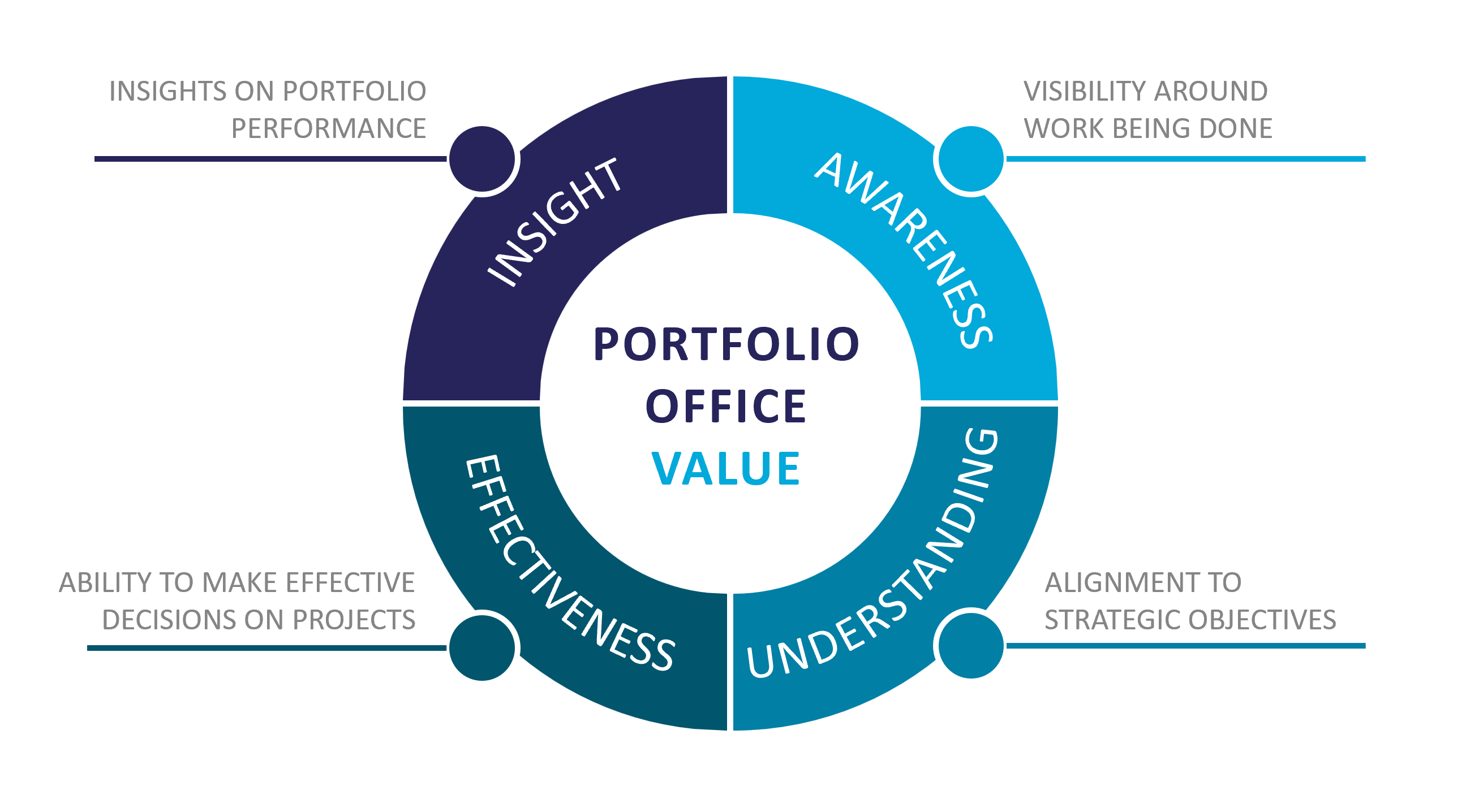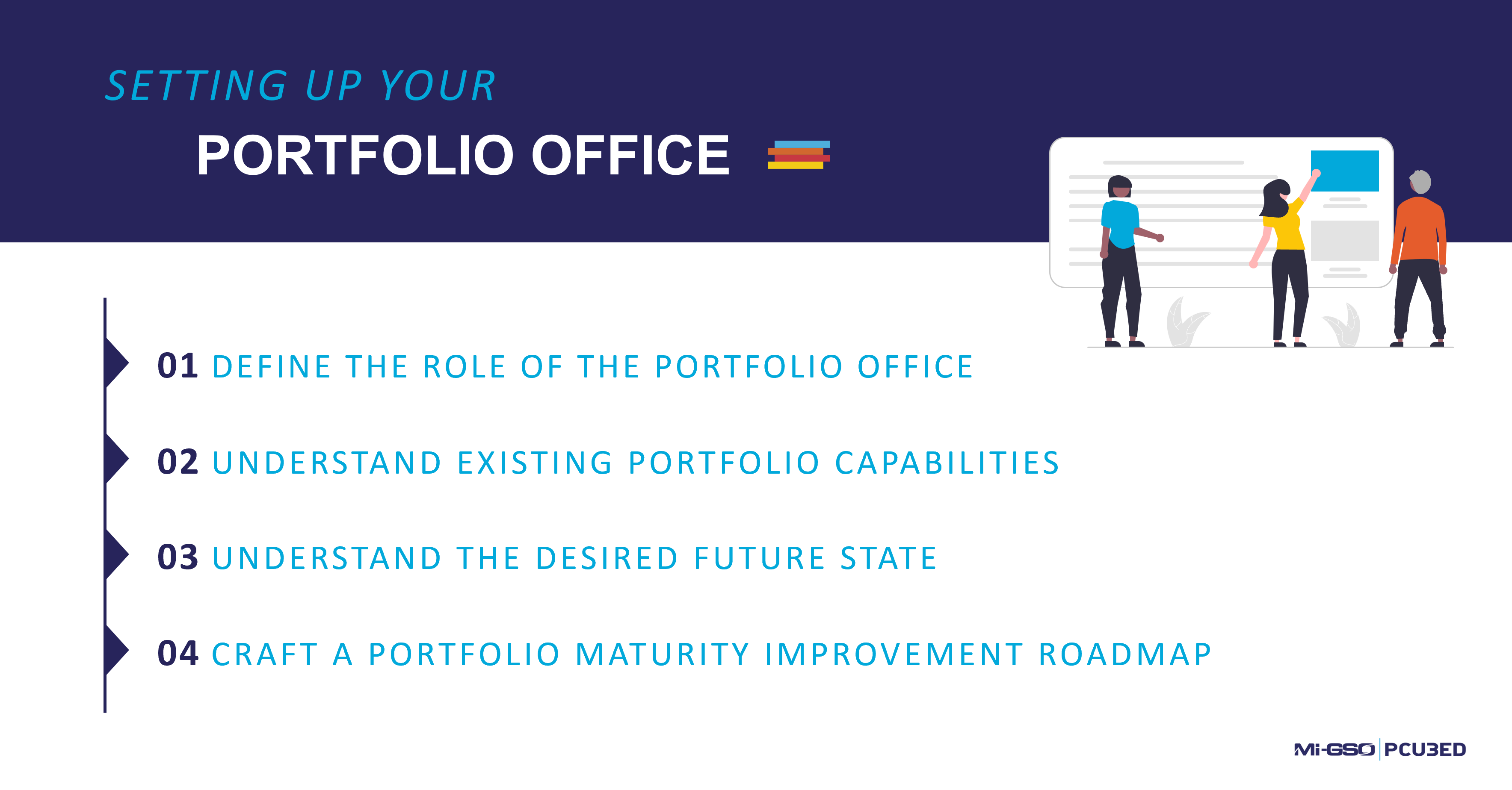For many organizations, this is the year they will become more agile, gain better visibility, cut costs, reduce time to market, improve productivity and reduce waste. While this sounds familiar, it is also near impossible to achieve. Although it’s no silver bullet, the practice of project portfolio management (PPM) can help organizations achieve some of this, namely prioritization.
Portfolio Management is the means of overseeing a collection of projects or programs within an organization from concept through to delivery. The goal is to make sure that the most critical resources are invested in initiatives that best support business strategy. However, there are a few challenges organizations face in uplifting their portfolio management capability. These project portfolio management trends include:
A well-defined and well-positioned portfolio management office could be just the answer to address these challenges and provide more value back to the organization.
A Portfolio Management Office (PfMO), Portfolio Office (PfO) for short, is defined as a permanent support structure for all business change within an organization. It is primarily concerned with providing the visibility and insights required to enable senior leadership to make more informed decisions. It also ensures that funding is given to the right initiatives and that those projects or initiatives continue to maximize their value.
Portfolio Offices provide the visibility, insight and assurance that organizations need to realize the maximum possible value from their business strategy.
A Portfolio Management Office is not that different from a Project Management Office. They both provide visibility, insight, and assurance so that organizations can realize the maximum possible value from their strategic investments.
Typical roles and responsibilities of the Portfolio Office include:
One of the first priorities of the Portfolio Office is to establish the framework for portfolio management, i.e. a common lifecycle for all projects within the portfolio. They may also be called in to facilitate the implementation of an enterprise PPM tool like Planisware or Microsoft Project. In addition, it is the Portfolio Office that is typically tasked with implementing resource management so that leadership may understand capacity versus demand.
In summary, the benefits of implementing a Portfolio Management Office include:

Many organizations seek to deploy a Portfolio Office this year. We recommend that you treat it like any other PMO setup initiative. The first step is to define the role of the Portfolio office. At MIGSO-PCUBED we do this by completing a Portfolio or P3O Maturity Assessment.
We at MP work with our clients to understand existing portfolio capabilities and run Envisioning sessions with the leadership team to understand the desired future state. Once we have that, our teams craft a Portfolio Maturity Improvement Roadmap, or capability uplift roadmap. This is an outline of iterative and adaptable sprints which refine the processes, technology, and data necessary to effectively manage a portfolio of individual projects.
Typically, a capability improvement roadmap consists of several workstreams, or areas of focus. Where you start on your portfolio management journey is best defined by linking your current pains to the issue the organization is facing. It is common for organizations to lack a single view of all in-flight projects or to lack clarity around what their team is working on.
We recommend starting there. Solve that particular pain as it relates to portfolio management, deliver the benefit, and communicate the win to the team. A Portfolio Office can help to define the processes and artifacts, as well as support any change activities.

We recently engaged for delivery of portfolio management services with a major Government Agency in Australia that was looking to uplift its capability. MIGSO-PCUBED designed a Portfolio Maturity Improvement roadmap, also known as a capability uplift roadmap, targeting three key areas:
To achieve the above goals, the MIGSO-PCUBED team developed and deployed a Portfolio Management Framework based on Axelos Management of Portfolio (MoP) standards. They also refined their existing process to support 7 key portfolio delivery elements:
With the new framework and processes in place, the client organization has addressed the funding inconsistencies between departments and improved its project approval performance. The MIGSO-PCUBED team has since transitioned responsibility back to the Portfolio Office which is driving the ongoing continuous improvement action plan.
Looking to implement your own Portfolio Office? We recommend a few key principles:
Loved what you just read?
Let's stay in touch.
No spam, only great things to read in our newsletter.
We combine our expertise with a fine knowledge of the industry to deliver high-value project management services.
MIGSO-PCUBED is part of the ALTEN group.
Find us around the world
Australia – Canada – France – Germany – Italy – Mexico – Portugal – Romania – South East Asia – Spain – Switzerland – United Kingdom – United States
© 2024 MIGSO-PCUBED. All rights reserved | Legal information | Privacy Policy | Cookie Settings | Intranet
Perfect jobs also result from great environments : the team, its culture and energy.
So tell us more about you : who you are, your project, your ambitions,
and let’s find your next step together.
Dear candidates, please note that you will only be contacted via email from the following domain: migso-pcubed.com. Please remain vigilant and ensure that you interact exclusively with our official websites. The MIGSO-PCUBED Team
Choose your language

A monthly digest of our best articles on all things Project Management.
Our website is not supported on this browser
The browser you are using (Internet Explorer) cannot display our content.
Please come back on a more recent browser to have the best experience possible
